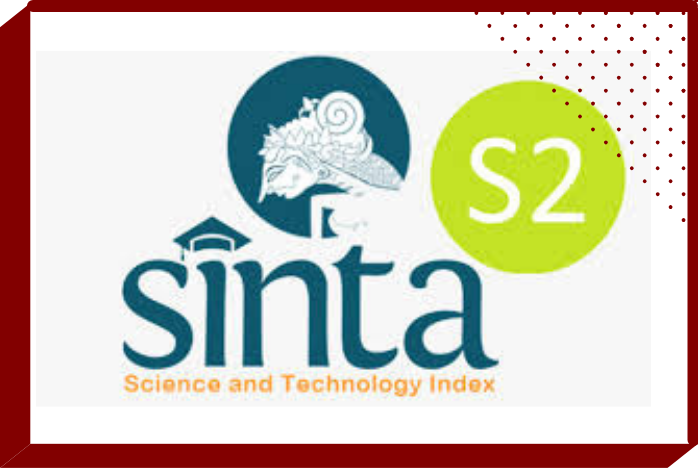Variasi Bahasa dalam Media Sosial Twitter
 Abstract views: 5627
,
Abstract views: 5627
,
 PDF downloads: 5318
PDF downloads: 5318
Abstract
Language is a communication tool that is usually used by people to work together and interact. Language variation is closely related to language and society. This research on language variations that occur on Twitter social media aims to find out how the meaning of language variations in Twitter social media. There are two languages studied, namely (1) slang whose data is taken from the @Ivanasha, @usaiusulhh, and @aldapstsr accounts, and (2) Javanese whose data is taken from the @nksthi account. This research uses a qualitative approach, with descriptive analysis method. This study collects non-interactively data. The source of the data is humans who work as subjects or key informants. The research is sociolinguistic studies. This study was chosen because this study looks at the use of language that includes language variation.
Downloads
References
Aini, N. (2019). Bahasa Indonesia Sebagai Alat Media Komunikasi Sehari-Hari. OSFREPRINT.
Alyusi, Shiefty D. S., dan Nur. (2018). Media Sosial: Interaksi, Identitas, dan Modal Sosial. Jakarta : Prenadamedia Group.
Azizah, A. R. (2019). Penggunaan Bahasa Indonesia dan Bahasa Gaul di Kalangan
Remaja.JURNAL SKRIPTA: Jurnal Pembelajaran Bahasa dan Sastra Indonesia Universitas PGRI Yogjakarta. 5 (2) 33–39.
Hardani, Helmina, A., Jumari, U.,Evi, F. U., Ria, R.I., Roushandy, A. F., Dhika, j. S., dan
Nur, H. A. (2020). Buku Metode Penelitian Kualitatif & Kuantitatif. Yogjakarta: CV. Pustaka Ilmu Group.
Hudaa, S., & Bahtiar, A. (2020). Variasi Bahasa Kaum Milenial: Bentuk Akronim dan Palindrom dalam Media Sosial. ESTETIK : Jurnal Bahasa Indonesia, 3(1), 41.
Juhroti, S. (2011). Penggunaan Bahasa Indonesia dan Bahasa Jawa dalam Proses Pembelajaran di TK Masyitoh Kecamatan Larangan Kabupaten Brebes. Universitas Negeri Semarang.
Khamdani, A. (2020). Variasi Pemakaian Bahasa Jawa di Kabupaten Wonosobo (Kajian Sosiodialektologi). UNNES Repository.
Malabar, S. (2014). Sosiolinguistik. Gorontalo: Ideas Publishing.
Meritseba, D. R., Rahardjo, T., & Pradekso, T. (2013). Penggunaan Bahasa Jawa dalam Keragaman Bahasa Komunikasi Masa Kini. Interaksi Online, 1(4).
Nadia, N. (2019). Bentuk Bahasa Gaul pada Status Komen di Media sosial Twitter Periode 2018/2019. 34.
Nuryani, N., Siti I., & Ixsir, E. (2014). Sosiolinguistik dalam Pengajaran Bahasa Berbasis Multikultural: Teori dan Praktik Penelitian. Bogor: IN MEDIA.
Prayudi, S., & Nasution, W. (2020). Ragam Bahasa dalam Media Sosial Twitter: Kajian Sosiolinguistik. Jurnal Metamorfosa, 8(2), 294–305.
Rifai, A., Febriani, I., & Rosid, A. (2020). Analisis Penggunaan Variasi Bahasa Madura Bangkalan pada Komunikasi Informal Siswa Kelas VIII SMPN 1 Kwanyar Bangkalan. Jurnal Ghancaran. 1–10.
Sardiyah, N. (2020). Pengaruh Bahasa Gaul Terhadap Penggunaan Bahasa Indonesia Mahasiswa UNS 2019. OSFPREPRINT.
Sulianta, F. (2015). Keajaiban Media sosial. PT Elex Media Komputindo.
Swandy, E. (2017). Bahasa Gaul Remaja dalam Media Sosial Facebook. Jurnal Bastra, 1(4), 1–19.
Waridah. (2015). Penggunaan Bahasa dan Variasi Bahasa dalam Berbahasa dan Berbudaya. Simbolika, 1(1), 84–92.
Wijana, I. D. P. (2019). Pengantar Sosiolinguistik. Yogjakarta: UGM Press.
Yunistita. (2015). Variasi dan Fungsi Bahasa dalam Jejaring Sosial Twitter. Humanis, 10(2), 1–8.
Zulaeha, I. (2010). Dialektologi: Dialek Geografi dan Dialek Sosial. Yogyakarta: Graha Ilmu.
Ghancaran: Jurnal Pendidikan Bahasa dan Sastra Indonesia uses an Open Access Policy under the Creative Commons Attribution-ShareAlike 4.0 International License. Authors publishing in this journal agree to the following terms:
- Ghancaran Journal holds the copyright and grants the journal rights for first publication with the work simultaneously licensed under a

The work is distributed under Creative Commons Attribution-ShareAlike 4.0 International License which allows others to share, copy, and redistribute the material in any media or format and adapt, remix, change, and develop the material even for commercial purposes, as long as it is stated credit and license derivative works under similar terms. - Authors may make additional contractual arrangements for non-exclusive distribution of the journal's published work version.
- Authors are permitted to post their work online (e.g., in institutional repositories or on their websites) before and during submission, as doing so may lead to productive exchange.



















